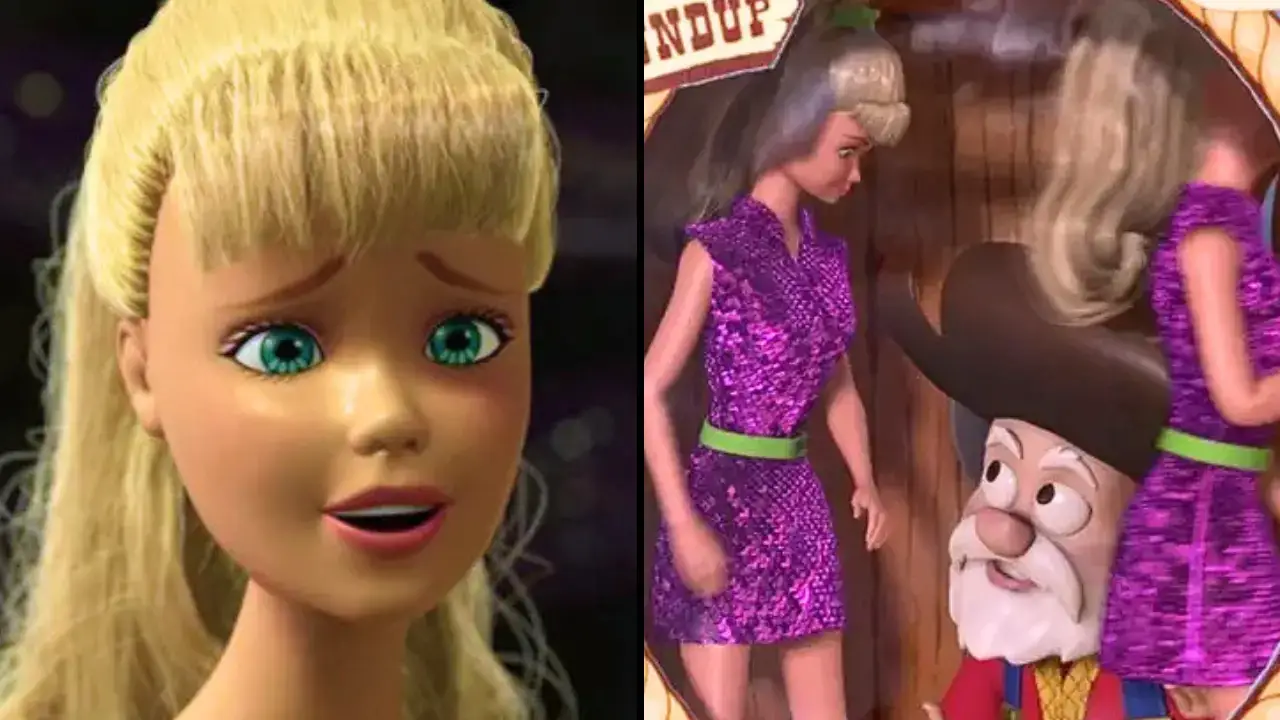Pixar made a notable change to Toy Story 2 twenty years after its release by removing an ‘inappropriate’ Barbie joke that hasn’t aged well.
Pixar Animation Studios quietly made a notable change to its beloved 1999 classic Toy Story 2, addressing a joke that many viewers today consider inappropriate. The change was implemented in a 2019 re-release of the film, marking the 20th anniversary of its debut. The decision reflects a growing sensitivity within the film industry toward content that may not align with contemporary values.

The scene in question involves a blooper reel segment shown during the film’s end credits. These faux bloopers, a signature touch of Pixar’s earlier films, added humor by portraying animated characters as if they were real actors making mistakes on set. One of the bloopers features Stinky Pete, a scheming prospector, in his display box with two Barbie dolls. In the scene, Pete is seen offering the dolls a role in the next Toy Story movie in a manner that mimics a casting couch scenario. The joke, intended as lighthearted humor in 1999, now draws criticism for its inappropriate implications.
The decision to remove the joke comes amid broader discussions about representation and the responsibilities of media creators. With increased awareness of workplace harassment and the Me Too movement spotlighting issues of power dynamics and exploitation, the joke struck a different chord with modern audiences. Pixar’s removal of the scene demonstrates the studio’s commitment to ensuring its content remains relevant and appropriate for all viewers.
The updated version of Toy Story 2 omits the blooper entirely, a change that was quietly implemented without significant fanfare. However, fans and critics alike quickly noticed the alteration, sparking debates online. Some praised Pixar for addressing the issue, viewing it as a necessary update to align with contemporary values. Others expressed concern about altering historical content, arguing that such changes might sanitize or erase cultural artifacts rather than addressing them directly.
Pixar’s decision aligns with a broader industry trend of reevaluating older works to reflect modern sensibilities. In recent years, several studios and streaming platforms have revisited their catalogs, adding disclaimers, editing scenes, or removing problematic content altogether. The aim is often to strike a balance between preserving the artistic integrity of classic works and ensuring they do not perpetuate harmful stereotypes or narratives.
For Toy Story 2, the change underscores Pixar’s enduring focus on crafting stories that resonate with diverse audiences across generations. While the alteration may seem minor, it signals a willingness to grow and adapt in response to evolving cultural norms, ensuring that timeless tales like Toy Story continue to be celebrated by both longtime fans and new audiences.